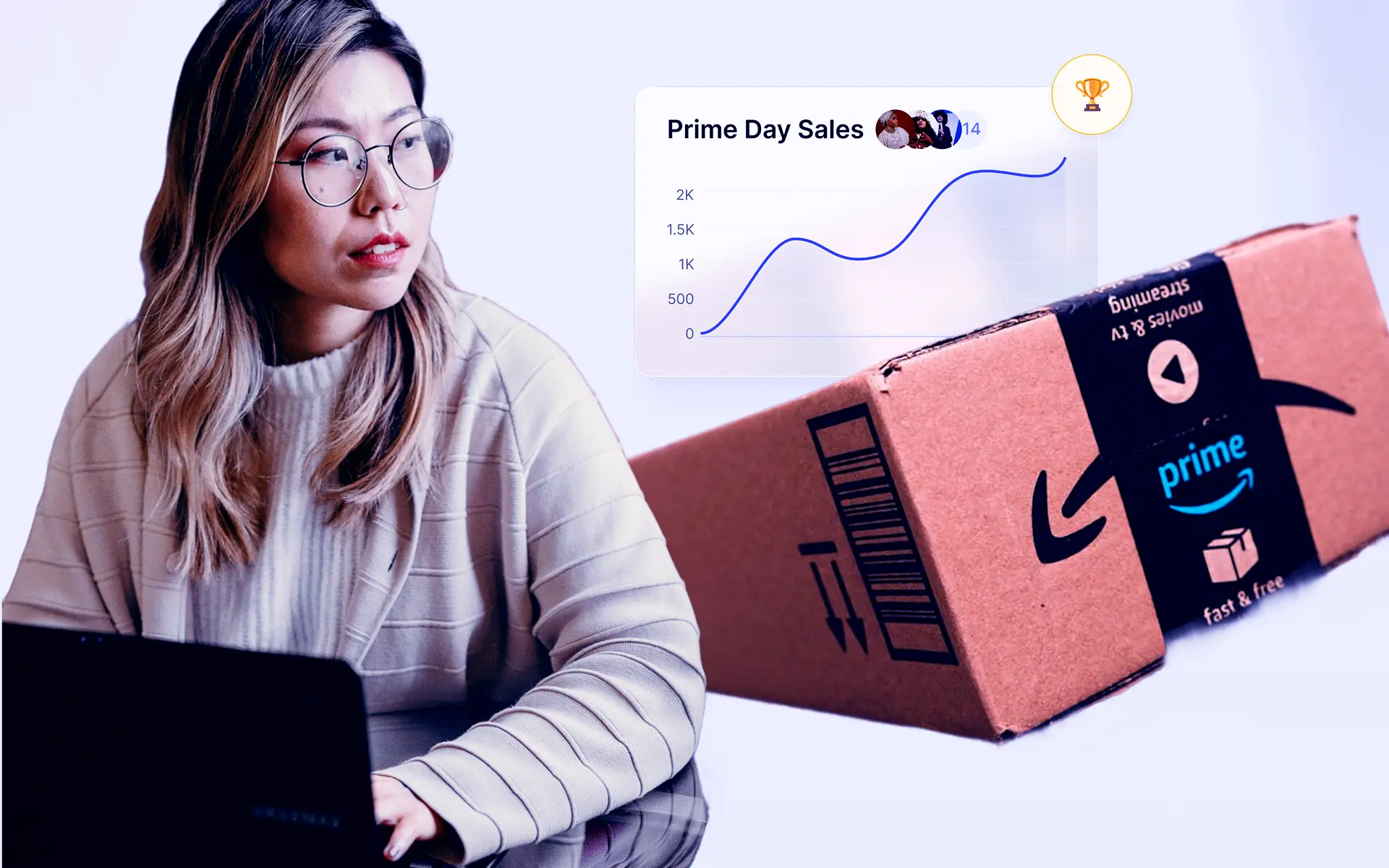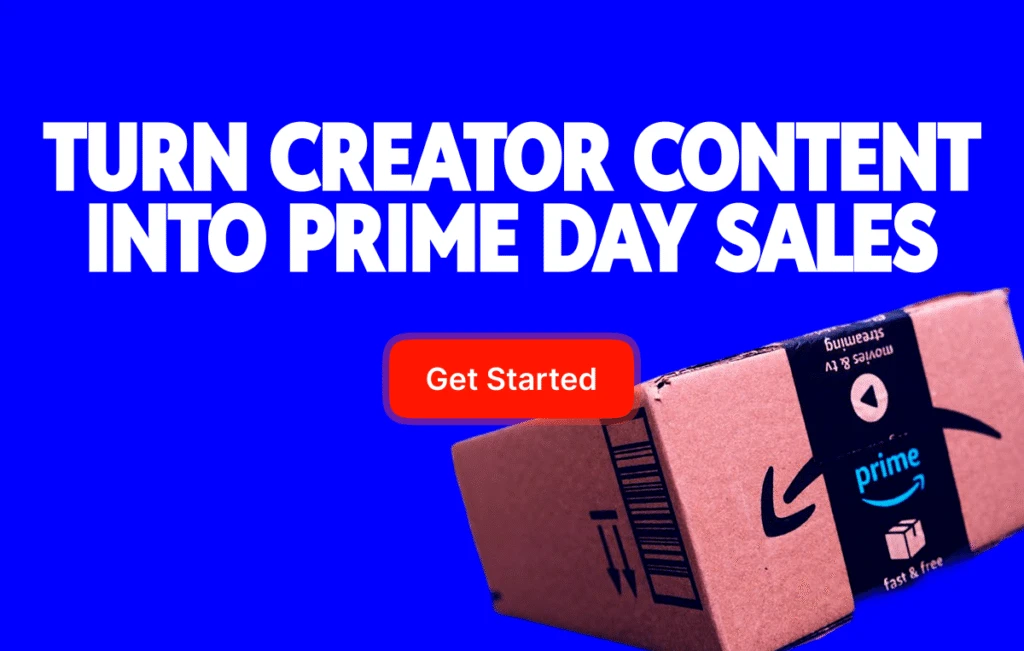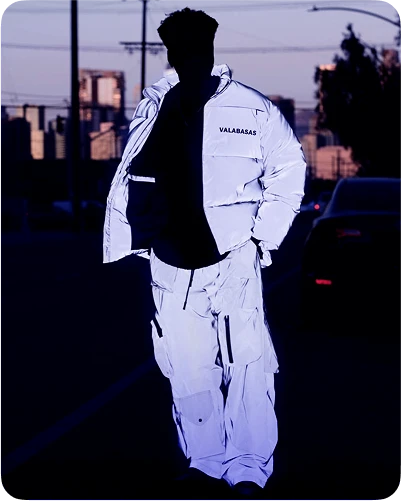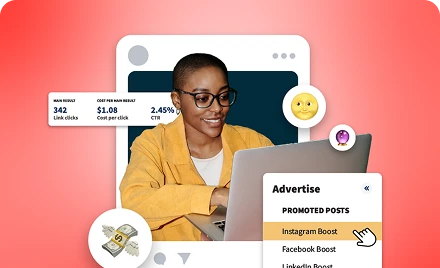Prime Day isn’t just a big mid-year e-commerce event anymore. In 2022, Amazon introduced its first fall edition, ‘Prime Big Deals Days’ in October, directly competing with Black Friday and Cyber Monday. But does that mean Black Friday is losing its edge? Not quite.
These two events represent two distinct shopping mindsets: Prime Day now kick-starts early holiday purchases, while Black Friday still dominates when shoppers hunt for gifts and big-ticket items. Knowing these differences — when people shop, what they buy, and where they spend — is essential for planning campaigns in Q4 that truly convert.
This overview breaks down exactly how the fall edition of Prime Day and Black Friday compare, what shopping trends are emerging, and how influencer marketing is driving measurable results across both. More importantly, we’ll show you how to prepare your creator campaigns to meet audiences where they’re already spending.
| Event | Prime Big Deals Day 2024 | Black Friday 2024 |
| Total Online Sales | $6.79 billion | $10.8 billion |
| Event Duration | 2 days | 3 days |
| Timing | October | Late November |
| Access | Prime members only | Open to all |
| Shopping Trends |
Household essentials (24%) Apparel and Shoes (22%) Home goods (22%) Beauty / Cosmetics (21%) |
Makeup & Skincare Toys & Games Apparel & Accessories Luggage & Bags Electronics Sporting Goods Bedding & Linens |
| Mobile Shopping Share |
53.2%* From July Prime Day |
69% |
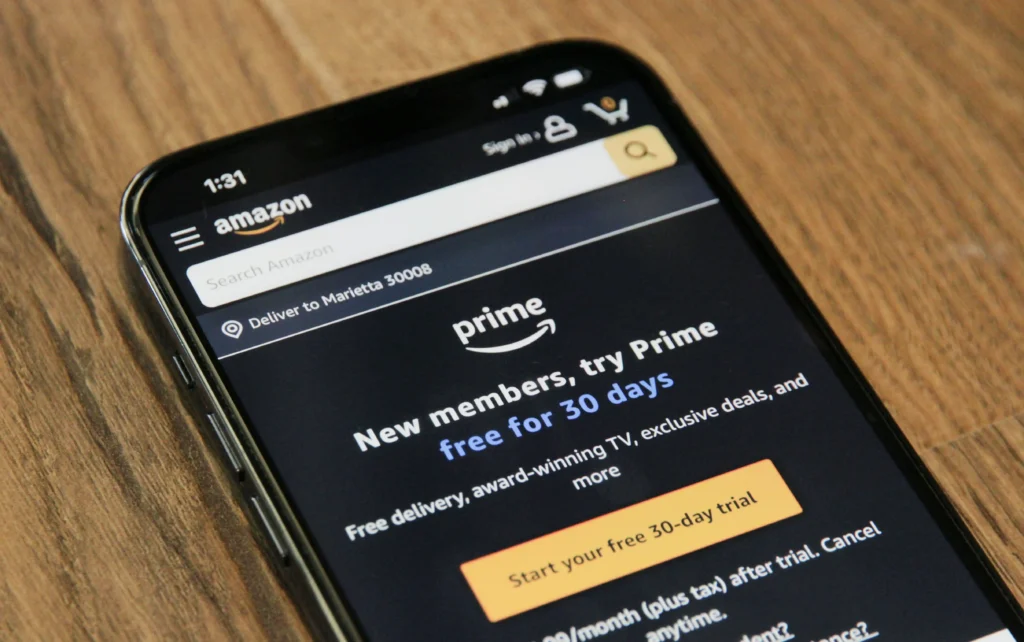
Prime Day Sales & Shopping Trends
In 2024, the fall edition of Prime Day (October 7–8) delivered record savings of $1 billion for Prime members. While the exact sales total remains unclear, forecasts estimate $6.79 billion in sales, up 10.3% from the 2023 event. Overall, Amazon drove a 26.1% uplift in sales during the promotional week.
Unlike the BFCM event, Amazon shoppers avoided big-ticket items, opting instead for smaller purchases. Only one-quarter (26%) of respondents bought holiday gifts.
Key shopping trends included:
- Household essentials (24%)
- Apparel and Shoes (22%)
- Home goods (22%)
- Beauty / Cosmetics (21%)
October Prime Days are reaching beyond the Amazon platform. Retail giants like Target, Walmart, Best Buy, and Kohl’s launched their own October events at the same time. According to E-Marketer, 33% of respondents shopped or planned to shop Walmart Holiday Deals, while 31% joined Target Circle Week.
Prime Day Influencer Marketing Landscape
Now that we know what makes Prime Day unique, let’s dive into the role influencer marketing has played. According to Adobe, Influencers’ content converted 10 times more than social media overall for this summer’s Prime Day edition. Affiliates and Partners drove 19.9% of total revenue. This highlights the importance of leveraging UGC during this period. But what messaging performed during this period?
From what we’ve seen, the top-performing content is mostly curated lists of the best deals influencers have found. This messaging works well because it triggers a fear of missing out in their audience. There are so many deals available that they’re lost in the noise. So when it’s coming from creators they know and love, it’s a no-brainer. The items are usually presented in action (e.g. Small kitchen appliances, Vacuum cleaners, Candles).
Prime Day shoppers are on the hunt for practical upgrades, think everyday essentials, home goods, fashion, and beauty products that elevate their routines. Check out these examples that show Prime Day influencer content at its best.
Black Friday – Keeping the lead for high-value items
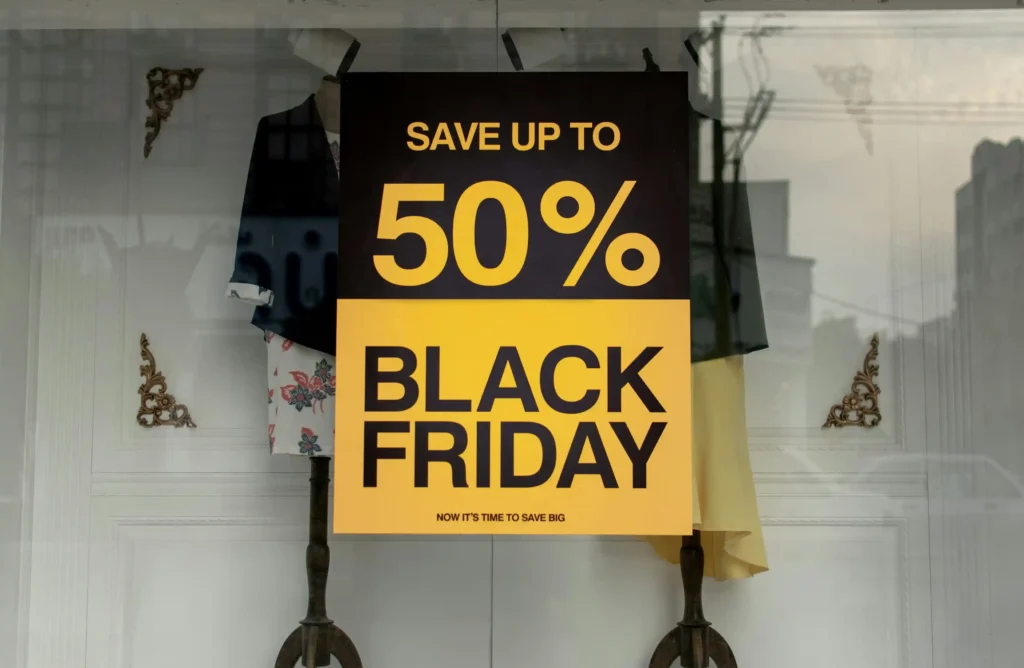
Black Friday Sales & Shopping Trends
Black Friday 2024 continued to hold its place as a cornerstone in the U.S. shopping calendar, generating $10.8 billion in online sales. This marked a 10.2% increase from $9.8 billion in 2023. Unlike Prime Day, Black Friday’s deals are open to all shoppers, which contributes to its widespread popularity and accessibility.
Black Friday stood out for its focus on high-value product categories, including Makeup, Clothes, Bags, Electronics, and Toys. Consumers consider Black Friday as the best time to purchase holiday presents and big-ticket items, thanks to bigger savings and more competitive pricing.
According to Criteo and Adobe, the product categories that spiked during Black Friday 2024 were the following:
- Makeup & Skincare
- Toys & Games
- Apparel & Accessories
- Luggage & Bags
- Electronics
- Sporting Goods
- Bedding & Linens
Black Friday Influencer Marketing Landscape
Nearly 58% of Black Friday shoppers say they rely on influencers for purchase recommendations. That’s not a trend, it’s a profound shopping transformation.
Just like Fall Prime Day, curated influencer lists continue to drive top performance, tapping into the same FOMO effect around can’t-miss deals. The key difference? Prime Day messaging emphasizes household essentials and lower-cost items, while Black Friday focuses on gift-giving, particularly higher-end purchases.
The best Black Friday creators led with storytelling, often tying content to holiday themes. Like curated gift guides for moms or must-have deals for beauty lovers, content that feels personal, festive, and timely.
For more insights, read our latest article: 5 Influencer Campaigns That Drove Massive Sales
How to prepare your influencer campaign for this October’s Prime Day?
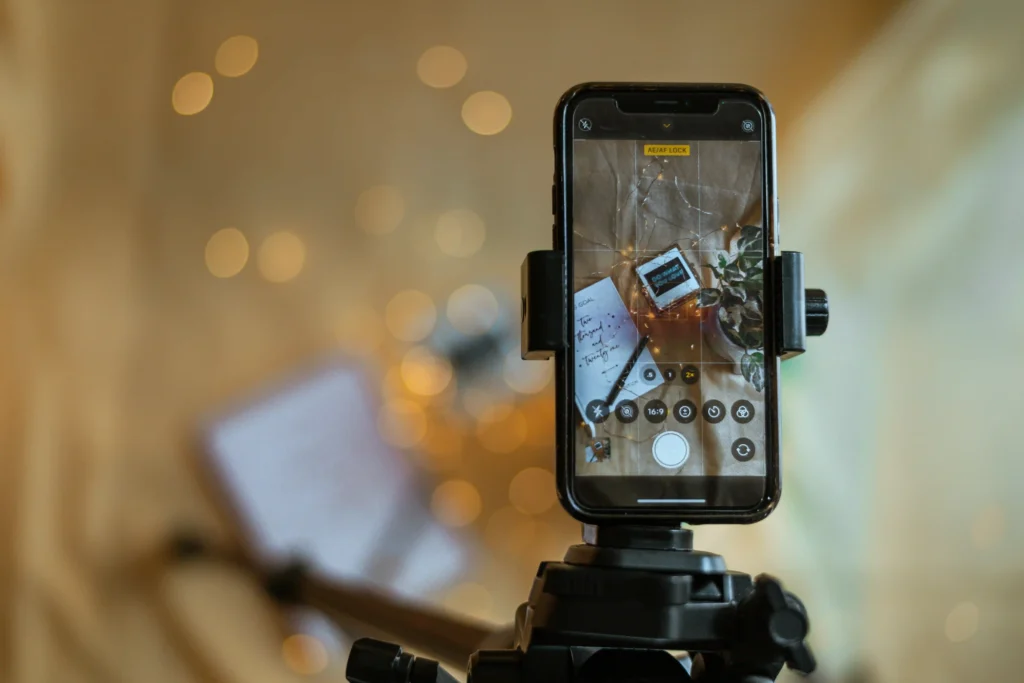
Let’s explore how we can use insights from the 2024 Prime Big Deals Day to make 2025 a success. This quick guide will help you launch a high-performing influencer campaign for the next Prime Day.
- Identify some relevant products to advertise. Think about what people crave as temperatures drop: comfort, warmth, and wellness. Highlight products that resonate with those needs: cozy home essentials, skincare that combats dry air, winter fashion staples, or seasonal wellness items. These are perfect for curated “Top 10” lists that drive engagement and clicks.
- Find the Right Affiliate Creators. This is where most brands get stuck: Identifying the right creators and confirming their availability for affiliate work. With Upfluence’s Affiliate Search, you can skip the cold DMs and endless back-and-forth. Upfluence matches your brand with affiliate influencers who are already open to collaboration. Look for creators whose audience aligns with your ideal customer and who naturally produce list-style or product review content, as these formats drive conversions.
- Set up your campaign and track. Once your products are selected and affiliate partners identified, it’s go time. Start by crafting a clear creative brief that outlines campaign goals, content expectations, and key messaging. Then, use Upfluence to streamline execution: Generate unique discount codes and affiliate links tied to each creator. Automate outreach workflows to connect with your influencer shortlist at scale. And finally, track every click and conversion in real-time using Upfluence’s performance dashboard.
Two Events. One Big Opportunity.
Prime Day is no longer just Amazon’s playground; It’s a way to capture early holiday shoppers. Meanwhile, Black Friday still commands attention as the ultimate holiday shopping event.
The smart move? Don’t choose between them, strategize for both. Tailor your influencer campaigns to each event’s unique messaging. Lean on creators to cut through the noise with curated content that converts. And use platforms like Upfluence to automate your workflows, track performance, and scale your success.
Because when you’re backed by real-time data, affiliate-ready creators, and seamless execution, you don’t just compete during these mega-events, you lead the way. Ready to turn Prime Day and Black Friday into peak revenue moments? Let’s make it happen.
